 by our College Data Analytics Team
by our College Data Analytics TeamAMU total enrollment is approximately 1,108 students. 1,048 are undergraduates and 36 are graduate students.
Male/Female Breakdown of Undergraduates
The full-time AMU undergraduate population is made up of 56% women, and 44% men.
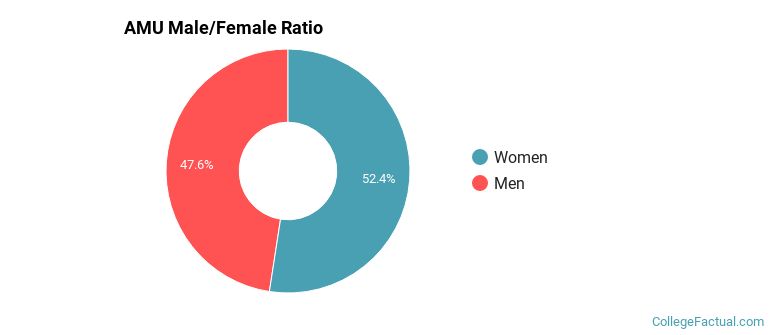
For the gender breakdown for all students, go here.
AMU Racial/Ethnic Breakdown of Undergraduates

| Race/Ethnicity | Number |
|---|---|
| White | 711 |
| Hispanic | 152 |
| Unknown | 78 |
| Black or African American | 58 |
| Asian | 40 |
| Native Hawaiian or Pacific Islander | 0 |
| International | 0 |
| Multi-Ethnic | 0 |
See racial/ethnic breakdown for all students.
Male/Female Breakdown of Graduate Students
About 42% of full-time grad students are women, and 58% men.
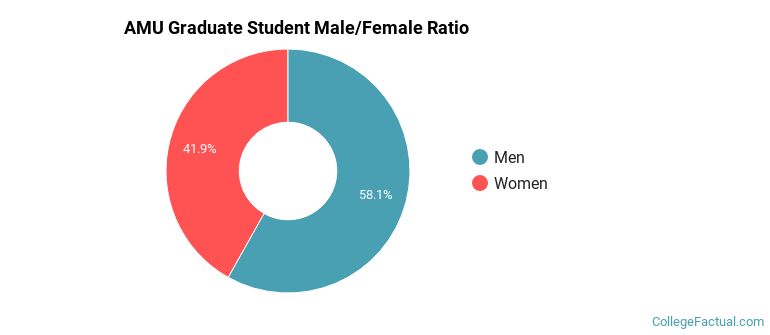
For the gender breakdown for all students, go here.
AMU Racial-Ethnic Breakdown of Graduate Students
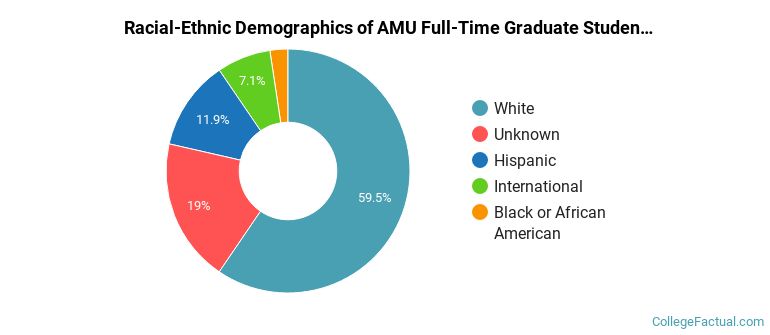
| Race/Ethnicity | Number |
|---|---|
| White | 27 |
| Hispanic | 3 |
| Unknown | 3 |
| Asian | 2 |
| Black or African American | 1 |
| Native Hawaiian or Pacific Islander | 0 |
| International | 0 |
| Multi-Ethnic | 0 |
See racial/ethnic breakdown for all students.
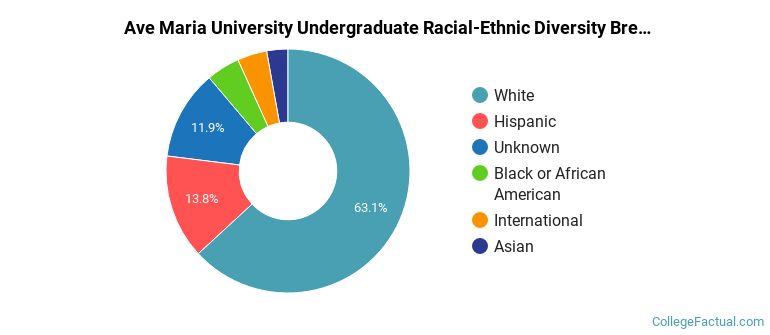
| Race/Ethnicity | Number |
|---|---|
| White | 755 |
| Hispanic | 160 |
| Unknown | 82 |
| Black or African American | 60 |
| Asian | 42 |
| Native Hawaiian or Pacific Islander | 0 |
| International | 0 |
| Multi-Ethnic | 0 |
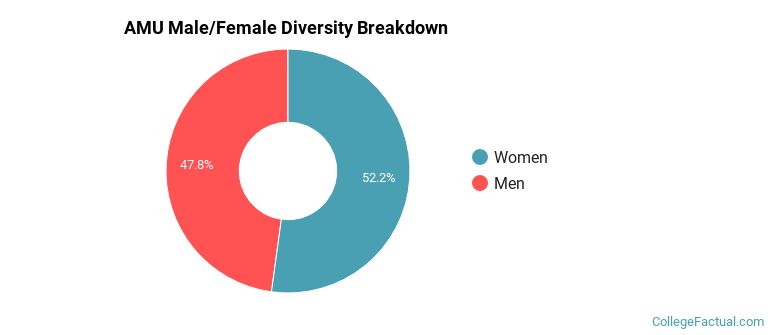
There are approximately 615 female students and 493 male students at AMU.
AMU ranks 276 out of 2,183 when it comes to geographic diversity.
56.44% of AMU students come from out of state, and 1.12% come from out of the country.
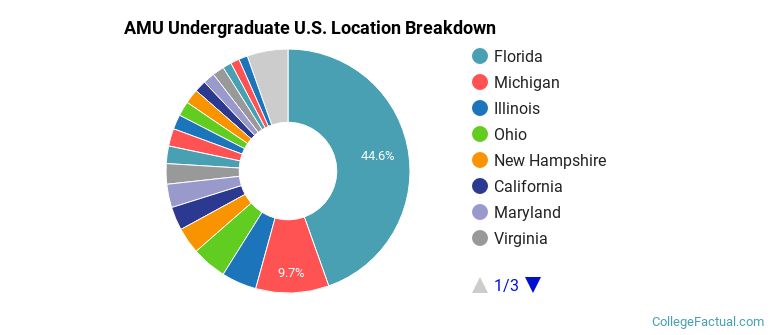
The undergraduate student body is split among 31 states (may include Washington D.C.). Click on the map for more detail.
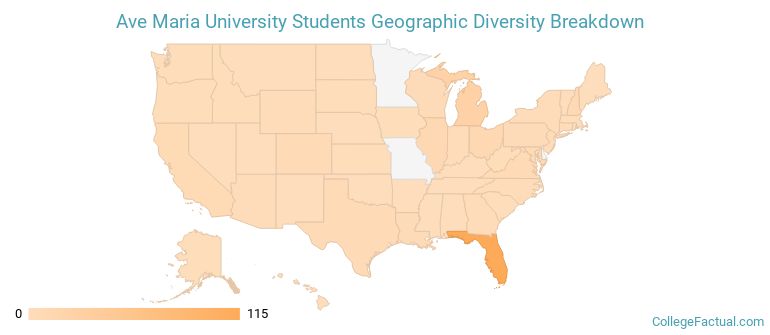
| State | Amount |
|---|---|
| Florida | 115 |
| Michigan | 25 |
| Illinois | 12 |
| Ohio | 12 |
| New Hampshire | 9 |
A traditional college student is defined as being between the ages of 18-21. At AMU, 80.23% of students fall into that category, compared to the national average of 60%.
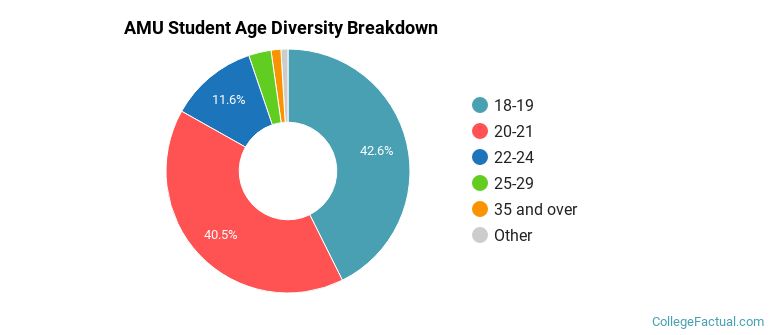
| Student Age Group | Amount |
|---|---|
| 18-19 | 458 |
| 20-21 | 435 |
| 22-24 | 125 |
| 25-29 | 32 |
| 35 and over | 14 |
| 30-34 | 10 |
| Under 18 | 0 |
Footnotes
*The racial-ethnic minorities count is calculated by taking the total number of students and subtracting white students, international students, and students whose race/ethnicity was unknown. This number is then divided by the total number of students at the school to obtain the racial-ethnic minorities percentage.
References